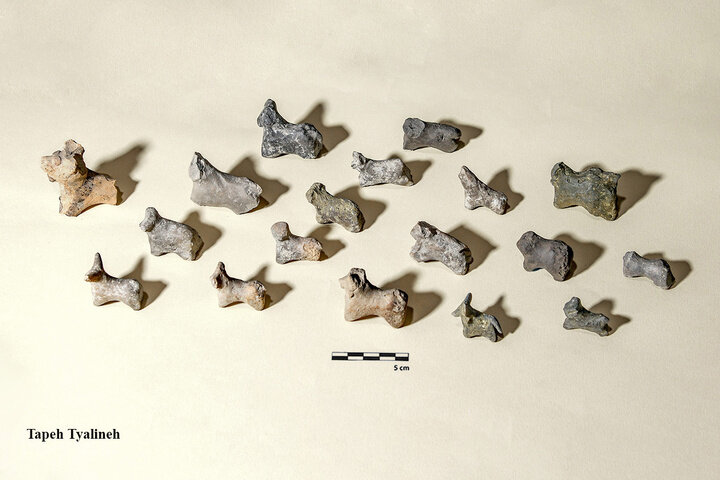Over 2,000 ancient seals unearthed in Iran’s Tapeh Tyalineh

TEHRAN - Archaeologists have uncovered over 2,000 ancient seal impressions, along with a vast collection of artifacts including pottery, stone tools, animal remains, counting objects, and over 100 animal figurines during the second season of excavations at Tapeh Tyalineh in Iran’s Kermanshah province.
The discoveries are shedding light on the social and economic structures of the early third millennium BC, CHTN reported on Saturday.
The initial discovery of clay seal impressions dating back to the early third millennium BC in 2021 drew attention to the site. Following damage to parts of the area, a first season of archaeological excavation was conducted in 2023.
The findings prompted further investigations, now underway in the second excavation season, according to the project’s lead archaeologist, Shokouh Khosravi.
Key findings
During excavations of a 25-square-meter area, researchers unearthed more than 4,000 seal impressions, estimated to be 5,000 years old.
These artifacts, combined with other findings from the first season, reveal that Tapeh Tyalineh was likely an administrative and economic center engaged in the exchange and distribution of goods such as animal products, oil, and some kinds of beverages.
In addition to the seals, the excavation has uncovered over 100 intact and broken animal figurines, clay counting tools, pottery fragments, carbonized plant remains, and animal bones. These materials offer critical insights into the dietary patterns and daily lives of the site’s ancient inhabitants.
A unique administrative site
According to Khosravi, Tapeh Tyalineh holds exceptional importance for understanding the economic and social changes in the Central Zagros region, particularly in the Kuzaran-Mahidasht plain (Sanjabi area).
“Tapeh Tyalineh stands out among archaeological sites in Iran for its administrative and accounting finds. Nowhere else in the world has such a large number of ancient seals been discovered in a single location,” she explained.
The current excavation season, a collaborative effort between the University of Kordestan and the Research Institute of Cultural Heritage and Tourism, will continue until December 10. It aims to study the site’s architecture, spatial usage, and artifact distribution patterns to better understand the economic and social systems underpinning the use of seals and seal impressions.
One of the most significant discoveries in this season has been mudbrick architecture featuring door seals and scattered seal impressions on its floors. “These findings highlight the proximity of administrative buildings to the disposal areas, as many of these items were discarded after accounting and administrative use in antiquity,” Khosravi noted.
Economic hub of the Central Zagros
The findings underline Tapeh Tyalineh’s role as a key player in regional economic exchanges and administrative organization in the Central Zagros region 5,000 years ago.
Khosravi emphasized the uniqueness of the site, stating, “Tapeh Tyalineh offers an unparalleled opportunity to study an early historic community in detail.”
The discoveries from this season promise to enhance our understanding of the ancient societies that once thrived in the region, as well as their complex economic and administrative practices.
The Kermanshah region is a cradle of civilization due to its antiquity and Neolithic sites which have yielded rich collections of stone tools and fossil bones.
AM
Leave a Comment